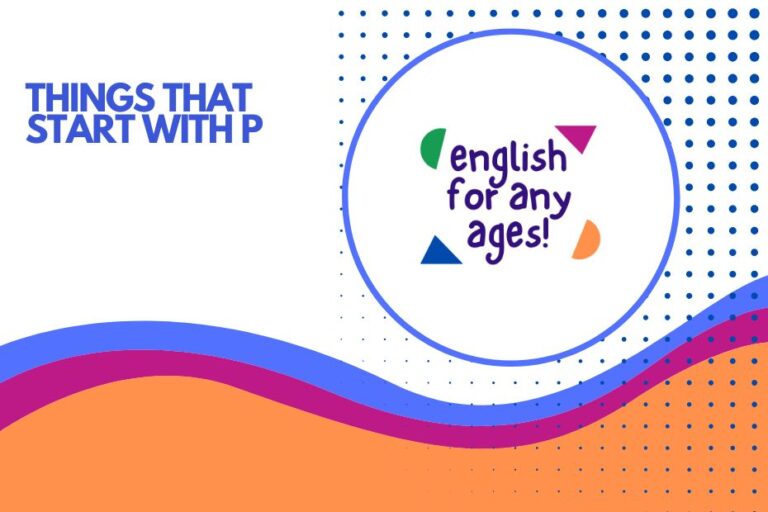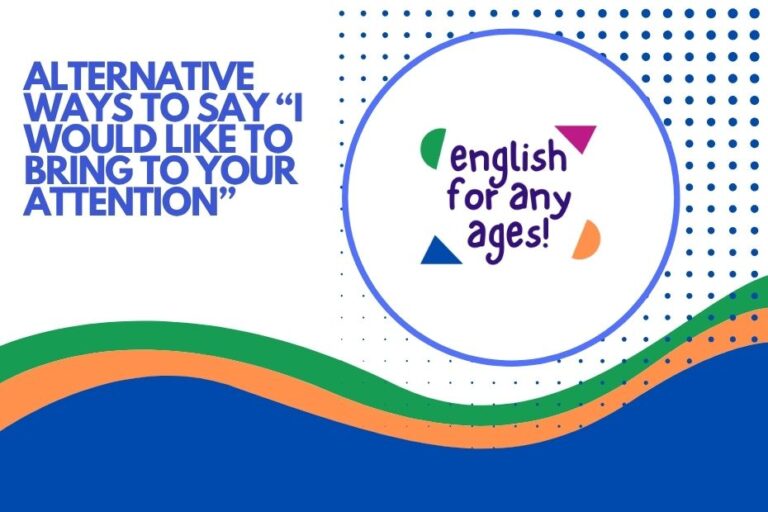Principle vs. Principal: Mastering the Difference with Examples
Understanding the difference between “principle” and “principal” is crucial for clear and effective communication in English. These two words, while similar in spelling and pronunciation, have distinct meanings and uses.
Confusing them can lead to misunderstandings and errors in writing. This article provides a comprehensive guide to differentiating between “principle” and “principal,” complete with definitions, examples, and practice exercises.
Whether you are a student, a professional, or simply someone who wants to improve their English skills, this guide will help you master the correct usage of these often-confused words.
Table of Contents
- Introduction
- Definitions: Principle vs. Principal
- Structural Breakdown
- Types and Categories
- Examples
- Usage Rules
- Common Mistakes
- Practice Exercises
- Advanced Topics
- FAQ
- Conclusion
Definitions: Principle vs. Principal
Let’s begin by establishing clear definitions for each word. Understanding the core meaning of “principle” and “principal” is the first step in using them correctly.
Principle
A principle is a fundamental truth or proposition that serves as the foundation for a system of belief or behavior or for a chain of reasoning. It is a guiding rule or code of conduct. Principles are often abstract and represent deeply held values or beliefs. They can guide decision-making, ethical behavior, and the development of theories or policies. Think of it as a moral compass or a foundational concept.
In simpler terms, a principle is a rule, belief, or idea that guides your actions or decisions. It’s something you consider important and try to follow.
Principal
Principal, on the other hand, has several meanings, most of which relate to importance or authority. As an adjective, “principal” means most important or main. As a noun, it can refer to the head of a school, the most important person in an organization, or the original sum of money invested or borrowed. The key here is that “principal” often relates to a person in charge or something of primary importance.
Essentially, “principal” can be a person holding a high position or the main part of something, especially money.
Structural Breakdown
Both words share a common root, which contributes to the confusion. However, their suffixes differentiate their meanings and usage.
The suffix “-ple” in “principle” often indicates a concept or idea, while “-pal” in “principal” often relates to a person or position. Recognizing this subtle structural difference can serve as a mnemonic device to help distinguish between the two.
To remember which is which, you can use the following mnemonic: “Principle” ends in “-ple,” and a rule is important to people. “Principal” ends in “-pal,” and the principal is your pal (in the sense of being the “head” person) at school, or it refers to your paltry sum of money.
Types and Categories
While both words have core definitions, they can be further categorized to understand their nuances and applications.
Types of Principles
Principles can be categorized based on the field they apply to:
- Moral Principles: These guide ethical behavior and decision-making (e.g., honesty, integrity, fairness).
- Legal Principles: These form the basis of laws and legal systems (e.g., due process, equal protection).
- Scientific Principles: These are fundamental laws of nature (e.g., gravity, thermodynamics).
- Business Principles: These guide business operations and strategies (e.g., customer satisfaction, profitability).
- Artistic Principles: These govern the creation and appreciation of art (e.g., balance, harmony, proportion).
Types of Principals
The noun “principal” can refer to different roles or entities:
- School Principal: The head of a school.
- Principal in a Firm: A leading member or owner of a company.
- Principal Amount: The original sum of money in a loan or investment.
- Principal Actor: The main performer in a play or film.
The adjective “principal” simply means “most important” or “main”:
- Principal Reason: The primary cause or justification.
- Principal Goal: The most important objective.
- Principal Component: The main ingredient or part.
Examples
The best way to solidify your understanding is to see these words in action. The following tables provide numerous examples of “principle” and “principal” used in various contexts.
Principle Examples
This table illustrates the use of “principle” as a guiding rule or fundamental truth.
| Sentence | Explanation |
|---|---|
| He lived his life according to the principle of honesty. | Honesty was a core value guiding his actions. |
| The company was founded on the principle of fair trade. | Fair trade is the fundamental belief behind the company’s operations. |
| The principle of gravity explains why objects fall to the ground. | Gravity is a fundamental law of physics. |
| She refused to compromise her principles, even under pressure. | She would not abandon her deeply held beliefs. |
| One of the basic principles of democracy is freedom of speech. | Freedom of speech is a fundamental aspect of democratic governance. |
| The design followed the principle of form following function. | The design was guided by the idea that the shape should reflect its purpose. |
| The scientist adhered to the principle of empirical evidence. | The scientist based their work on observable data. |
| The teacher emphasized the principle of respect in the classroom. | Respect was a key value promoted in the classroom. |
| The lawyer argued based on the principle of natural justice. | The lawyer’s argument was founded on fundamental fairness. |
| He violated the principle of confidentiality by sharing the information. | He broke a rule about keeping information private. |
| The organization operates on the principle of transparency. | The organization values openness and honesty in its dealings. |
| The artist’s work reflects the principle of balance. | The artwork demonstrates a sense of equilibrium. |
| The engineer applied the principle of leverage to the design. | The engineer used the concept of leverage to improve the design. |
| The politician campaigned on the principle of equality for all. | The politician’s platform was based on equal rights. |
| The doctor followed the principle of “do no harm.” | The doctor’s primary ethical guideline was to avoid causing harm. |
| The negotiator stood firm on the principle of mutual benefit. | The negotiator insisted on an outcome that benefited both parties. |
| The investor based his decisions on the principle of diversification. | The investor spread his investments to reduce risk. |
| The software was developed according to the principle of user-friendliness. | The software was designed to be easy to use. |
| The chef followed the principle of using fresh, local ingredients. | The chef prioritized using high-quality, locally sourced food. |
| The therapist adhered to the principle of client confidentiality. | The therapist maintained the privacy of their clients. |
| The architect designed the building based on the principle of sustainability. | The building was designed to minimize environmental impact. |
| The writer’s work was guided by the principle of clarity. | The writer aimed to communicate in a clear and understandable manner. |
| The athlete trained according to the principle of progressive overload. | The athlete gradually increased the intensity of their training. |
| The historian analyzed the events based on the principle of cause and effect. | The historian examined the relationships between events. |
| The philosopher explored the principle of existentialism. | The philosopher investigated the nature of existence. |
Principal Examples
This table showcases the various uses of “principal” as both an adjective (meaning main or most important) and a noun (referring to a person in authority or a sum of money).
| Sentence | Explanation |
|---|---|
| The principal of the school announced new policies. | The head of the school made the announcement. (noun) |
| The principal reason for the delay was the weather. | The main reason was the weather. (adjective) |
| He invested the principal in a high-yield bond. | He invested the original sum of money. (noun) |
| She was the principal dancer in the ballet. | She was the main dancer. (adjective) |
| The principal investigator led the research team. | The head investigator led the team. (adjective) |
| They repaid the principal amount of the loan. | They repaid the original loan amount. (noun) |
| The principal export of the country is coffee. | Coffee is the main export. (adjective) |
| He met with the school principal to discuss his son’s progress. | He met with the head of the school. (noun) |
| The principal beneficiary of the will was his daughter. | His daughter was the main recipient. (adjective) |
| The principal challenge was securing funding for the project. | The main challenge was finding money. (adjective) |
| The firm has several principals who manage different departments. | The firm has several leading members. (noun) |
| The principal aim of the program is to improve literacy. | The main goal is to improve literacy. (adjective) |
| The principal source of energy is solar power. | The main source of energy is solar power. (adjective) |
| The principal actor received rave reviews for his performance. | The main actor was praised for his acting. (adjective) |
| The principal concern is the safety of the employees. | The main worry is the safety of the employees. (adjective) |
| The bank requires collateral to secure the principal. | The bank needs security for the original loan amount. (noun) |
| The principal ingredient in the recipe is flour. | Flour is the main ingredient. (adjective) |
| The company’s principal office is located in New York. | The company’s main office is in New York. (adjective) |
| The principal investigator presented the findings at the conference. | The head researcher presented the results. (adjective) |
| The principal reason for his success was his hard work. | The main reason he succeeded was his effort. (adjective) |
| The principal characters in the novel are well-developed. | The main characters are well-developed. (adjective) |
| The principal focus of the meeting was the budget. | The main focus of the meeting was the budget. (adjective) |
| The principal challenge facing the team is the deadline. | The main challenge for the team is the deadline. (adjective) |
| The principal owner of the company made a statement. | The main owner of the company made a statement. (adjective) |
| The principal aim of the study was to understand the causes of the disease. | The main goal of the study was to understand what causes the disease. (adjective) |
Usage Rules
To avoid confusion, it’s important to remember the specific rules governing the use of each word.
Principle Usage Rules
- “Principle” is always a noun.
- It refers to a fundamental truth, belief, or rule.
- It is often used in the context of ethics, morality, or laws.
Principal Usage Rules
- “Principal” can be either a noun or an adjective.
- As a noun, it refers to a person in authority (e.g., school principal) or a sum of money.
- As an adjective, it means “main” or “most important.”
Common Mistakes
Here are some common mistakes people make when using “principle” and “principal,” along with corrections:
| Incorrect | Correct | Explanation |
|---|---|---|
| The principle reason for his departure was personal. | The principal reason for his departure was personal. | “Principal” is needed as an adjective meaning “main.” |
| He is a man of strong principals. | He is a man of strong principles. | “Principles” is the plural form of the noun “principle.” |
| She was guided by her principal. | She was guided by her principles. | “Principles” is needed to refer to her guiding beliefs. |
| The principal of gravity is a fundamental law. | The principle of gravity is a fundamental law. | “Principle” is needed to refer to a fundamental law. |
| He invested his savings in principles. | He invested his savings in the principal. | “Principal” is needed to refer to the original sum of money. |
Practice Exercises
Test your understanding with these exercises. Fill in the blanks with the correct word: “principle” or “principal.”
Exercise 1: Fill in the Blanks
| Question | Answer |
|---|---|
| 1. The school __________ announced a new dress code. | principal |
| 2. Honesty is an important __________ to live by. | principle |
| 3. What is the __________ reason for your decision? | principal |
| 4. They adhered to the __________ of fair play. | principle |
| 5. He repaid the __________ with interest. | principal |
| 6. The __________ investigator presented the findings. | principal |
| 7. She refused to compromise her __________. | principles |
| 8. The design followed the __________ of simplicity. | principle |
| 9. The __________ export of the region is wheat. | principal |
| 10. He violated the __________ of confidentiality. | principle |
Exercise 2: Correct the Errors
Identify and correct the errors in the following sentences.
| Question | Answer |
|---|---|
| 1. The principle reason for the meeting was the budget. | The principal reason for the meeting was the budget. |
| 2. He is a man of strong principals. | He is a man of strong principles. |
| 3. She was guided by her principal in all her decisions. | She was guided by her principles in all her decisions. |
| 4. The principal of leverage is used in many machines. | The principle of leverage is used in many machines. |
| 5. He invested his savings to increase his principles. | He invested his savings to increase his principal. |
| 6. The school’s main principal is dedicated to student success. | The school’s principal is dedicated to student success. |
| 7. One of the basic principals of democracy is freedom of speech. | One of the basic principles of democracy is freedom of speech. |
| 8. The lawyer argued based on the principal of natural justice. | The lawyer argued based on the principle of natural justice. |
| 9. The firm has several principle partners who manage different departments. | The firm has several principal partners who manage different departments. |
| 10. The doctor followed the principal of “do no harm.” | The doctor followed the principle of “do no harm.” |
Advanced Topics
For advanced learners, it’s helpful to understand the etymology of these words. Both “principle” and “principal” derive from the Latin word “princeps,” meaning “first” or “chief.” This shared origin explains their similar spelling and highlights the core idea of something being fundamental or of primary importance.
However, the different paths of their evolution in English have led to their distinct meanings today. Understanding this historical context can provide a deeper appreciation for the nuances of the English language.
Furthermore, in specialized fields like finance, “principal” can have more complex meanings related to agency and representation. For example, a “principal” can be a client who hires an agent to act on their behalf.
Exploring these specialized usages can further enhance your understanding of the word.
FAQ
Here are some frequently asked questions about “principle” and “principal”:
- What is the easiest way to remember the difference?
Think of “principle” as a rule (both words end in “-le”). Think of “principal” as a person in charge (like a school principal) or the main amount of money.
- Can “principal” ever be used in a moral context?
No, “principal” is generally not used in a moral context. “Principle” is the correct word to use when discussing ethics, values, or beliefs.
- Is it ever correct to use “principals” as a plural noun referring to multiple leaders?
Yes, “principals” can refer to multiple people who are leading members of a firm or organization. For example, “The firm has several principals who manage different departments.”
- How can I avoid confusing these words in my writing?
The best way to avoid confusion is to understand the definitions and practice using the words in sentences. When in doubt, consult a dictionary or grammar guide.
- What part of speech is “principle”?
“Principle” is always a noun.
- What part of speech is “principal”?
“Principal” can be both a noun and an adjective. As a noun, it refers to a person in authority or a sum of money. As an adjective, it means “main” or “most important.”
- Are there any exceptions to the usage rules?
While the general rules are consistent, context is always important. Pay attention to the surrounding words and the overall meaning of the sentence to ensure you are using the correct word.
- Why are these words so commonly confused?
The similar spelling and pronunciation, combined with their shared Latin root, contribute to the confusion. Many learners simply memorize examples and rules to overcome this challenge.
Conclusion
Mastering the distinction between “principle” and “principal” is essential for clear and accurate communication. By understanding their definitions, usage rules, and common mistakes, you can confidently use these words in your writing and speaking.
Remember that “principle” is a guiding rule or belief, while “principal” refers to a person in authority or something of primary importance. Practice using these words in various contexts, and don’t hesitate to consult resources when needed.
With consistent effort, you can eliminate this common source of error and enhance your overall English proficiency.
Continue to practice and reinforce your understanding through reading, writing, and active use of the language. Consistent application of these principles and attention to detail will solidify your grasp of these often-confused words.






